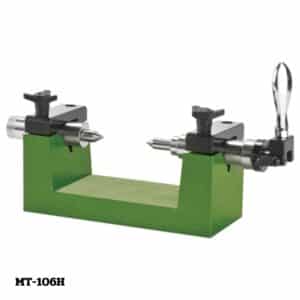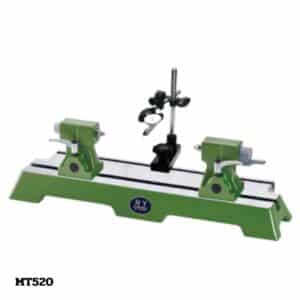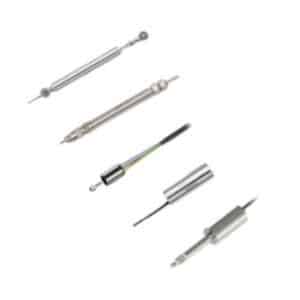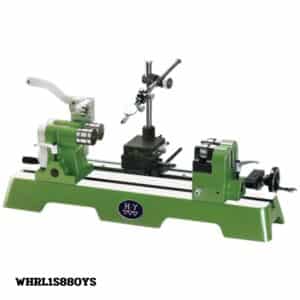Inspection Probe : Enhancing Precision in Quality Control
In the realm of manufacturing and quality control, inspection probes play a pivotal role in ensuring the precision and accuracy of machined components. These sophisticated tools are designed to measure, inspect, and verify the dimensions of various features in intricate details. This comprehensive guide explores the intricacies of inspection probes, their applications, working principles, types, and the critical role they play in maintaining the highest standards in manufacturing.
Introduction to Inspection Probes
Inspection probes are precision instruments used in metrology and quality control processes to inspect the dimensions, surface finish, and geometric characteristics of machined parts. These probes are typically mounted on coordinate measuring machines (CMMs) or other inspection equipment to gather data points that are crucial for verifying the conformity of a workpiece to its design specifications.
Working Principles of Inspection Probes
Inspection probes operate on the principle of touch-trigger probing. The key working principles include:
- Contact Measurement: Inspection probes make physical contact with the surface of the workpiece to collect measurement data. This contact can be triggered manually or automatically based on the programmed inspection routine.
- Deflection of Stylus: The inspection probe has a stylus that deflects as it makes contact with the workpiece surface. The deflection is then translated into electrical signals, which are used to determine the coordinates of the measured points.
- Coordinate Measurement: The CMM or inspection machine uses the collected data points to create a precise digital representation of the workpiece, allowing for the assessment of dimensions, tolerances, and geometric features.
Types of Inspection Probes
There are various types of inspection probes designed to cater to specific measurement needs. The most common types include:
- Touch Trigger Probes: These probes trigger a measurement when the stylus comes into contact with the workpiece surface. They are suitable for precise point-to-point measurements.
- Scanning Probes: Scanning probes are equipped with a continuous scanning mechanism, allowing them to collect data points along a continuous path. This is beneficial for capturing intricate surface profiles and contours.
- Non-Contact Probes: Some inspection probes use non-contact methods such as laser or vision systems to measure features without physical contact. These are ideal for delicate or sensitive surfaces.
- Specialized Probes: There are probes designed for specific applications, such as thread measurement probes, gear measurement probes, and form measurement probes.
Applications of Inspection Probes
Inspection probes find applications in various industries where precision and quality control are paramount. Some common applications include:
- Automotive Manufacturing: Inspection probes are used to measure critical dimensions of engine components, body parts, and assemblies to ensure they meet design specifications.
- Aerospace Industry: In aerospace manufacturing, where tight tolerances are crucial, inspection probes play a vital role in verifying the dimensions of intricate and high-precision components.
- Medical Device Manufacturing: The medical industry relies on inspection probes to ensure the accuracy and quality of components used in medical devices and implants.
- General Manufacturing: Inspection probes are employed in general manufacturing processes to verify the dimensions and quality of a wide range of components, from consumer electronics to industrial machinery.
Advancements in Inspection Probes
As technology advances, inspection probes continue to evolve. Some notable advancements include:
- High-Speed Scanning: Modern inspection probes can perform high-speed scanning, allowing for rapid data acquisition and increased efficiency in the inspection process.
- Enhanced Connectivity: Inspection probes are increasingly equipped with advanced connectivity features, enabling seamless integration with digital systems for data analysis and reporting.
- Increased Automation: Automation features, such as automatic probe changing systems and programmable routines, contribute to the efficiency and repeatability of inspection processes.
- Improved Materials and Design: Advancements in materials science and probe design contribute to increased durability, reduced wear, and enhanced accuracy in measurement.
Future Trends in Inspection Probes
Looking ahead, inspection probes are likely to witness further advancements, including:
- Integration with Industry 4.0: Inspection probes will become integral components of Industry 4.0 initiatives, with increased connectivity, data sharing, and real-time monitoring.
- Artificial Intelligence (AI) Integration: AI algorithms may be incorporated into inspection probes to enhance data analysis, pattern recognition, and decision-making during the inspection process.
- Miniaturization: There is a trend toward miniaturization of inspection probes, allowing for measurements in tight spaces and on small-scale components.
- Smart Probing Systems: Probing systems with embedded sensors and feedback mechanisms will provide real-time information about the condition of the probe, ensuring reliability and accuracy.
Conclusion
In conclusion, inspection probes are indispensable tools in the world of manufacturing and quality control. Their ability to precisely measure and verify dimensions ensures that machined components meet the stringent requirements of modern industries. As technology continues to advance, inspection probes will play a vital role in shaping the future of metrology and quality assurance, contributing to the production of high-quality, precise, and reliable products.
[Opening shot of a manufacturing facility]
Narrator (Voiceover): “In the intricate world of manufacturing, precision is everything. Enter the unsung hero: the inspection probe.”
[Cut to close-up shots of different types of inspection probes]
Narrator (Voiceover): “These precision instruments are the key to ensuring that every component meets the exacting standards of modern industries.”
[Cut to animated graphics illustrating the working principles of an inspection probe]
Narrator (Voiceover): “Operating on touch-trigger principles, inspection probes make physical contact with the workpiece, collecting data points with unparalleled accuracy.”
*[Cut to footage of inspection probes in action on a coordinate








